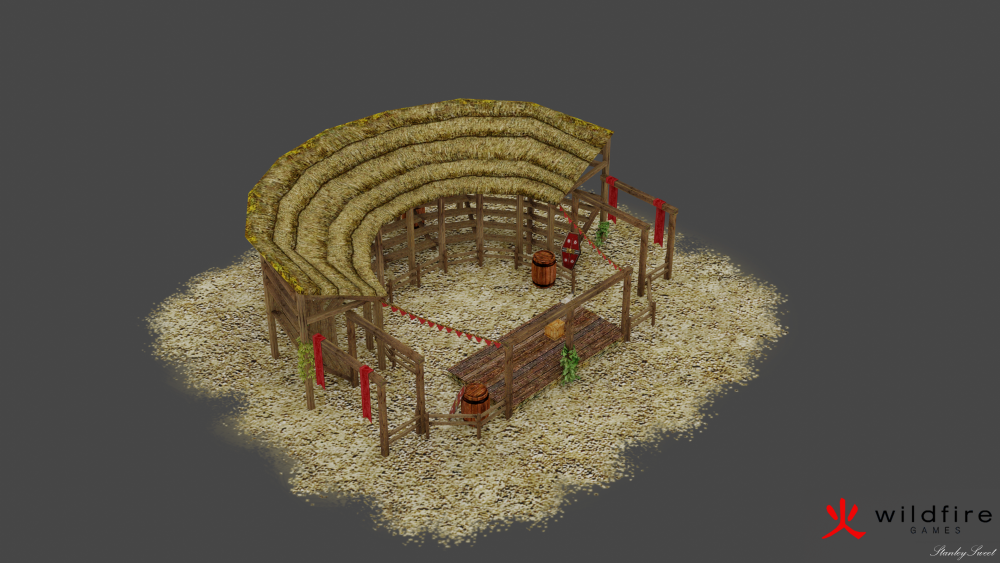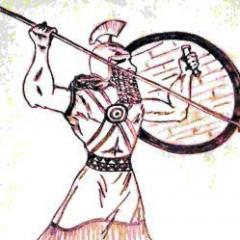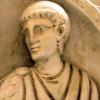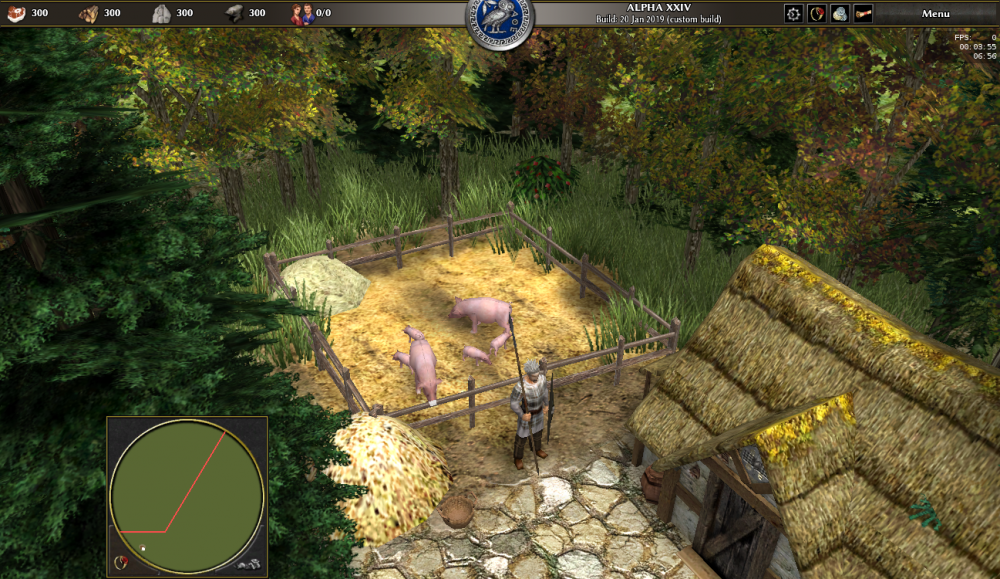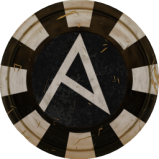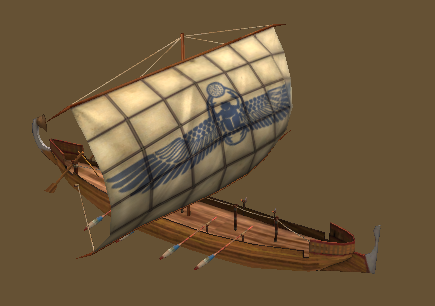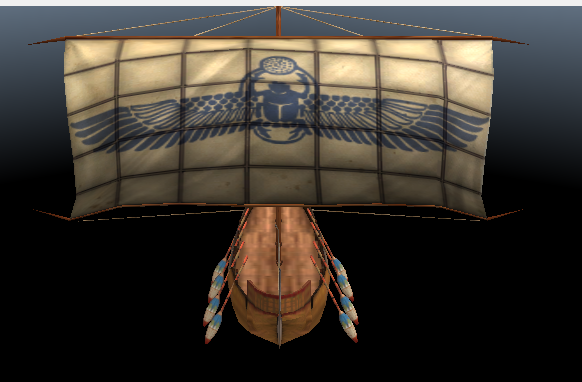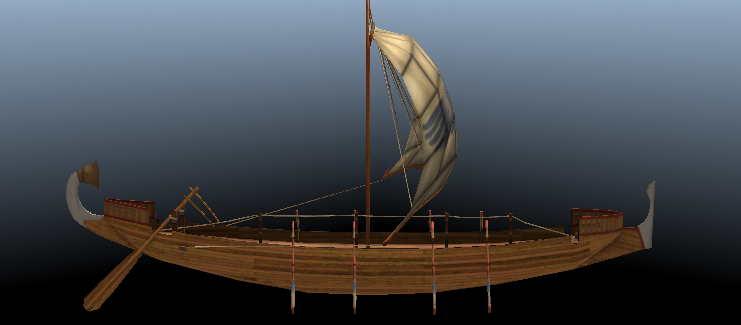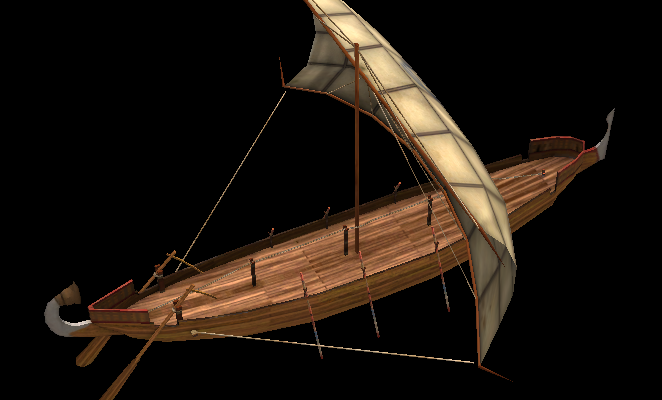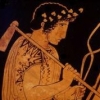Leaderboard
Popular Content
Showing content with the highest reputation on 2019-01-23 in all areas
-
5 points
-
2 points
-
First I want to say that it was a great pleasure to work on this mod. I have a lot of affection and respect for this game, where many people work hard to give us some fun. 0a.d has already provided me with hours of fun and I felt compelled to give back a little of it. Were long 7 months of much work, really most people do not know how much this is laborious. You need to always have new ideas, do and redo many things, look at historical context, test, test and test, and of course, have people available to help you in this process. Tnx @Angen @Lion.Kanzen @Stan` @ValihrAnt @Feldfeld @Stockfish @wowgetoffyourcellphone. Well, this will be the last version (1.0.5) of the mod for the current version a23b. Just a version to fix something if necessary. Nothing new will be added. From now on the whole work will be focused on the a24 version, where together with @elexis we will review the mod so that if so accepted by the developers, it can be implemented to the a24. The main goal of the mod was to bring players and the community a better experience of gameplay/balance within what the game can offer in the current state of development. It is perceived by everyone that gameplay has been "stalled" for some time, so that was my focus. As I mentioned before, even though many resources are lacking due to the current state of development, it is possible to do much more with what we have now. I want to make it clear here that the changes made in the mod have always respected the main pillars and design documents (just changed what was really needed for the balancing to work). Major changes/Features - Added counter system; - General balancing of all units and buildings; - Gameplay slightly different for each civilization; - Reformulation of current techs/auras/bonuses/teambonus; - New bonuses/auras. - New buildings/units/technologies for the respective civilizations; - New upgrades to units/buildings; - New icons; - Mercenary champions units now has icons with yellow color. - Civil centre can train only women (some exceptions); - All mercenaries cost only metal; - Units promoted has no gather penalty; - Deactivated the animation of promotion (units do not take damage while celebrating); - Hero after death can not be trained again; - Dead animals lost food; - Domestic animals can fatten; - Increased number of icons available on the panel; - Women can build all buildings; - Promotion (advanced/elite rank) gives +10% health, +1 armour, +20% attack +1 capture attack, +20% loot, vision range for all soldiers. Healers gain +5 heal range and +2 heal/HP. Counter System The system I chose to work on is simple and easy to set up for casual players or pro players. Spearmen/Pikemen bonus against Cavalry/Elephant; Archer/Slinger bonus against Melee Infantry; Skirmisher bonus against Archer/Slinger; Swordsmen all-round; The same applies to Cavalry. Cavalry Spearmen bonus against Cavalry/Elephant; Cavalry Archer bonus against Melee Infantry; Cavalry Skirmisher bonus against Archer/Slinger; Cavalry Swordsmen all-round. To many changes such example: to each quarter built by a Macedonian player, gain a free pikemen. Macedonian is the only civilization that can train pikemen in village phase. Sparta is a civilization focused on melee units and the only can train champions on village phase. These and many more changes can only be seen with details in the technological tree. Please, give your feedback, this is important. The latest version is not yet downloadable by mod.io, it is waiting authorization. If you have any doubts on how to install the mod: https://trac.wildfiregames.com/wiki/Modding_Guide1 point
-
It seems nice like this. How is the back side? Not looking too much empty? I know they put something to cover the stairs in the 3D model but I don't think it will fit with your general design. And what is your own opinion? Do want something to enhance the ambient (artistic pattern, pottery, or any other goods)?1 point
-
Hey, No, we haven't! I managed to make the linking! I dug down into the game engine code and figured out what code was related to Engine.{FunctionName} in JavaScript files. I modified the code by adding 2 functions, AppendToBuffer and WriteToFile so we can send data the Python, I also added useful functions that cannot be accessed from the simulation folder. Right now we are trying to understand Petra's attack and defense in order to develop the machine learning and we really need an active Petra maintainer so we can ask him about stuff we don't fully understand.1 point
-
I believe the (white) design on the sails should be underneath the ropes that form the grid on top of the sails. Your other images (with a blue sail design) already have this though, so I'm not sure if it is just an issue with that particular image.1 point
-
Tnx u feedback Nisean is purposeful, i do not want any tech much op. Sorry about Blacksmith upgrades, this was a my mistake of mine that is already fixed in the new version (probally realese today). Techs back to %. Mauri maceman is hack dmg but has bonus vs structures, same to champion javelins cav iber. I intend to implement capture for siege towers, seems good and realistic.1 point
-
That's intentional, specific names do not belong in generic parent templates, only in civilization-specific children (in this case structures/brit_rotarymill.xml and structures/gaul_rotarymill.xml, as it should be).1 point
-
Things im sure I like: - barracks cost same (do they? i think so) for every civ, so not only gauls and britons can spam barracks cuz they cost only cheap wood (and not expensive stone). now you can have as many barracks as gauls or celtics when you play seleucides or other civ. - rams not op anymore (my theory, didnt see rams in action) - since all melee units have hack dmg, its easier to kills rams, that make elephants more comparable to rams (before rams were way stronger than elephants because you needed special unit type to kill them, and that unit type was usually killed by enemy slingers, lol) - slingers not op anymore (not sure if archers,javleins and slingers are balanced now or if archers are op, that depends on how many shots archers miss from far distance), but this is quite great because now you dont HAVE to rush fortress and spam slingers as britons or gauls if you want to win - you can pick any other civ and win as well with archers or javelins. that kinda makes all civilizations playable, and not only these with slingers. Things not sure I like: - nisean horses went from 20% to 10% hp bonus (not sure if that was OP so was the nerf needed?). - many things like Blacksmith upgrades, went from10% or 20% to 1 or 2 points - that makes players think less. before Javelins would get the most from ranged attack upgrade in blacksmith (javelins had higher base dmg, so 20% from 20 for example is higher than 20% from 10) - there was one more reason to pick javelins (which were still losing vs slingers, by the way, but idea was there). i understand that its more 'fair' for all units if it adds a static, non-percent value (like 1 point), so archers get same amount of dmg that javelins get, but it makes players think less - kushites clubman, oh that was interesting that they had "club" type and had crush damage. now that dmg is taken from them. is the same going to happen to mauryan crush melee infantry champs and iberians crush cav javelins ? Things I consider bugged: - you took crush dmg from siege towers but they still target buildings when shooting, so siege towers are kinda useless when in enemy base PS. not sure how quickly it took u to change it but im happy that most important fixes needed (nerfing slingers and celtics) are already done1 point
-
I prefer V1. But need a cavalry in the Village phase, Sword cavalry could be.1 point
-
Someone should probably update that to use modio.1 point
-
I tried to use the mauryan worker elephant and 8 citizen soldiers to form a woodcutting task force on a map with single trees evenly spaced (sahel kind of map). I selected the soldiers and rightclicked on a tree. Then I selected the elephant and G-rightclicked on one of the soldiers. It sort of worked; the elepant followed the workers to the tree, and when it was depleted, to the next tree. However, there were 2 issues: 1. The elephant does not go close enough to the tree, so the soldiers have to carry the wood needlessly far. (If the soldier that the elephant is set to follow happens to go to the far side of the tree to find a place to chop, that will make the elephant go closer.) 2. Eventually the soldiers will disagree which tree to chop next. They will diverge and those that do not agree with the one that has the elephant following him will have to walk furter and further. Any ideas how to make this smarter? Following someone closer is perhaps just a matter of changing a magic number somewhere. Telling a soldier to follow another soldier that is chopping wood just makes the first soldier stand nearby and watch. Maybe follow should be interpreted as "follow and do whatever he does". When selecting the next tree, maybe take the distance to the nearest dropsite into consideration? (Now it just seems to select the closest tree from where the soldier was standing when he chopped the previous tree.)1 point
-
The biggest problem I have as a player and in the balancing mod is that gauls and brit do not have swordsmen/archer citizens. The Gallic roster could be like this: Heavy infantryman (spearman or swordman) - Cingetos (generic term for warrior fighting in the front line). Javelin skirmisher - Bagauda (bellicose/fighter), Talanos (support person). or Adretos (who moves fast, attacker). Slinger - Clucagretos (proto-indo-european reconstruction for slinger), Uassos (meaning servant, attested word) or Talanos (support person). Sword cavalry - Eporedos (cavalryman). Archer - Selgos (hunter) - Archers appeared only during the 1st Century BC, I suggest an unit available only in the 3rd phase but not an elite unit. Naked warrior (spearman) - Bariogaisatos (furious spearman). Fast and scary for fresh recruit (bonus against basic version of units ?) Elite infantryman (swordman) - Soldurios/Soliduros (bodyguard), Ambactos (servant, protector, retainer), Adscoros (attendant, retainer). Elite horseman (sword or lance) - Comaterecos (patrician) or Uerouicos (victorious warrior, great fighter). Anti-cavalry special unit - Epouanos (horse-killer). Gallic horsemen auxiliaries are described as being efficient anti-cavalry against the Parthians at Carrhae. Eastern Celts, Belgians and Germans share this feature it seems. The Britonic roster could be like this: Heavy infantryman (spearman or swordman) - Catucos (combatant), Batacos (combatant) or Batoros (who-hit-hard, fighter). Javelin skirmisher - Bagauda (bellicose/fighter), Talanos (support person). or Adretos (who moves fast, attacker). Slinger - Clucagretos (proto-indo-european reconstruction for slinger), Uassos (meaning servant, attested word) or Talanos (support person). Lance cavalry - Marcacos (cavalryman). Marcos is another word for the horse, more common in the island than in the continent. Light cavalry with javelins - Gaisaredos (Javelin on horse, mounted), Gaisatoredos (Javelinist on horse), Adretos (who moves fast, attacker) or Bagauda (attested for horsemen as well during the Gallo-Roman rebellion). Naked warrior (swordman) - Batoros (who-hit-hard, fighter) or Excingos (attacker, who-get-out-to-fight). The Caledonians are described as using longswords and small shield and fighting naked. Elite chariot warrior - Esseda (war chariot). The Britons use war chariots with a driver and an elite warrior, they throw javelins from it and continue the fight on foot (possibility for the unit to transport one infantryman ?) Elite noble infantryman (sword or spear) - Argos (battle champion, noble) or Donnouicos (noble warrior, noble fighter). Elite skirmisher infantryman - Caur (old-Irish for champion) or Art (old-Irish for champion and bear). A propose an Irish elite javelinist, with a historical irish shortsword. If the double weapons switch is implanted, it could be an interesting unit. Polyvalent. Gallic need spearman / Dont need three ranged units (only archers and jave), i would put slingers only to britons / Sword cav seems fine / Naked warrior, yes pls / Elite infantryman ok / Elite horseman (sword, if we will have a special unit probally is lancer cav); Britonic need swordman / Two Ranged units ok (jave/slings) / Two cavs jave and lancer seems good / Naked swordman, yes pls / Elite Chariot ok / Elite infantryman (sword) / Elite jave ok. I tried to differentiate with lancer/spearman for gallic and swordmans for britons. I think all civilizations should have these 4 units as a base, infantry melee spearman/sword, infantry ranged archer/javelins (I do not know how much of this is historically correct). It would be great for us to balance.1 point
-
Ho boy, So as an actual Hun Historian let's clear up a few things: 1. The Xiongnu and the Huns were the same people. The word has a Yeniseian and Old Turkic mixed origin as it relates to both the ruling dynasty of the Xiongnu (a Yeniseian people) and the Old Turkic name for the Ongi River in Mongolia. We don't know what it means other than that it was a dynastic name. Xiongnu is pronounced "Hongna" and was transmitted over the Himalayas or via sea trade to India and transliterated into Sanskrit, before coming up from India into Sogdian, and then spreading into Bactrian Greek as Ounna, where it became Ounnoi in Roman Greek (Romeika), and then Hunni in Latin. 2. The Huns themselves are directly related. Huns can be identified by the Haplogroup Q-M242. Some of you here might know that's weird because Q-M242 is Native American DNA. It's also Yeniseian DNA, with the Kettic people having the highest concentration at 99%, and high concentrations east into Beringia, where the Yeniseians and the Dene people separated about 18,000 years ago. However, the majority of the Huns that entered Europe were not Yeniseian although most had some percentage of Yeniseian DNA and ancestry. They also no longer spoke Yeniseian (Xiongnu), but now spoke Oghuric Turkic, with many Yeniseian loanwords, and this was the language the Romans identified as Hunnic and the people the Romans called Hunnic. They were the same identity as Xiongnu, but with many changes since the days of Modun Chanyu in the 3rd century BC. 3. If you're considering Steppe Nomad factions, then they should be: Scythians (who are related to the Karluk people) Sarmatians/Alans (Also Indo-Iranian nomads like the Scythians) Xiongnu/Huns (The same people, effectively. The last of the Yeniseian nomads and the first of the Turkic-speaking nomads). 4. If you have questions I can probably answer any of them about the Huns and I know a lot about the Alans too (Scythian is a bit beyond my usual area but I know more than most). I haven't bothered to read all of this thread but feel free to ask.1 point
-
1 point
-
Here some proposition https://en.wikipedia.org/wiki/Roman_currency#/media/File:Aes_Signatum.jpg Janus double-face from a Aes grave: https://img.ma-shops.com/goduto/pic/906_z_712_ae_grave.jpg Open hands from an Aes grave: https://fr.wikipedia.org/wiki/Fichier:Aes_Grave_Quadrans3.jpg1 point
-
1 point
-
Before anything Greek can be committed, first some clear decisions have to be made about the transliteration, see https://wildfiregames.com/forum/index.php?/topic/25202-transliteration-of-ancient-greek-into-english/ But you can start checking and correcting the specific names of Greek units, if you like; see https://wildfiregames.com/forum/index.php?/topic/25284-specific-name-review-units/ Thank you! Could you check D1757 ? Just a list of books, articles, webpages etc. you've used, to provide a starting point if people want to check something or find new words in the future.1 point
-
What happens is that you choose a Major God at the beginning of the match. This determines which Minor Gods you have access to later. At each phase advancement you get to choose a new Minor God to add to your pantheon based on your Major God choice. Each choice unlocks new monsters, technologies, and God Powers specific to that god.1 point
-
Kush Bireme is a Ptol placeholder unit without a specific name for now. We need a large Nile boat to replace it ( @Alexandermb )1 point
-
Anyway, for the transliteration of Greek, we should discuss and decide upon the following points: Do we want to distinguish between ᾰ, ῐ, ῠ and ᾱ, ῑ, ῡ? (Dictionaries do, text editions don't.) What to do with the iota subscriptum (ὑπογεγραμμένη): ᾳ, ῃ, ῳ? E.g. Θρᾴκη (Thrace) As for the transliteration of η, ω: classicists prefer not to transliterate Greek, because they assume everyone can read it fluently linguists prefer ę, ǫ historians prefer ê, ô Wikipedia prefers ē, ō As for the transliteration of υ and ευ, either u and eu, or y and ey in German and Latin, y represents a sound similar to Greek υ, but u is quite different in English and French, u represents a sound similar to Greek υ, but y is quite different ρ: r or rh? ξ → x, ψ → ps? β, π, φ → b, p, ph; γ, κ, χ →g, k, kh; δ, τ, θ → d, t, th; no objections? Personally I'd recommend ę/ǫ for η/ω, because ê/ô causes problems with accents, and ē/ō suggests η/ω were simply longer versions of ε/ο, which is not true for Classical Greek, while ę/ǫ makes it clear they're different sounds. Also, I think transcriibing ρ as simply r is fine.1 point
-
Not exactly true. A grapheme is the smallest possible unit in a writing system, e.g. a word in a logographic system, a syllable in a syllabary, and a letter in an alphabet (e.g. Greek). αυ /au̯/ and ευ /eu̯/ were diphthongs (“double sound”), a single syllable consisting of two vowels pronounced together (cf. “cowboy” /ˈkaʊˌbɔɪ/); in contrast, ει /eː/ and ου /oː/ had become monophthongs (“single sound”) in Classical Greek (cf. “voodoo” /ˈvuːduː/). However, none of these has a single character, all are written by two separate letters, thus two graphemes. In contrast, ᾳ, ῃ, and ῳ (initially diphthongs, later monophthongs) are single graphemes (as are e.g. å, æ=ä, ø=ö, and ü). Although pronunciation matters for one type of transcription (how to convert sounds into signs), it is unimportant for the other type (how to convert one writing system into another).1 point
-
I agree with you Nescio, except on the υ bullet point: ευ is not ε+υ, it is a single grapheme. So deciding to transliterate this grapheme into eu while transliterating the grapheme υ into y would be possible. Same thing for αυ, ου, ει, etc.1 point
-
The purpose of transliteration is to be precise. Transliteration has to be a bijection: if Ζεύς is transliterated Zeús, then υ has to be an u everywhere else as well, and not an y if e and o represent ε and ο, then η and ω shouldn't be written as e and o (ē/ê/ę and ō/ô/ǫ are fine) Accents matter: ὧς and ὡς (Hom ὥς) are two different words Be consistent: φ, χ, θ are the aspirated versions of π, κ, τ, so if κ is transliterated c, then χ ought to be ch, and if κ is transcribed k, then χ ought to be kh1 point
-
If I reduce my previous suggestions and try to be more simple: The Gallic roster could be like this: Heavy infantryman (spearman or swordman) - Cingetos (generic term for warrior fighting in the front line). Javelin skirmisher - Bagauda (bellicose/fighter), Talanos (support person). or Adretos (who moves fast, attacker). Slinger - Clucagretos (proto-indo-european reconstruction for slinger), Uassos (meaning servant, attested word) or Talanos (support person). Sword cavalry - Eporedos (cavalryman). Archer - Selgos (hunter) - Archers appeared only during the 1st Century BC, I suggest an unit available only in the 3rd phase but not an elite unit. Naked warrior (spearman) - Bariogaisatos (furious spearman). Fast and scary for fresh recruit (bonus against basic version of units ?) Elite infantryman (swordman) - Soldurios/Soliduros (bodyguard), Ambactos (servant, protector, retainer), Adscoros (attendant, retainer). Elite horseman (sword or lance) - Comaterecos (patrician) or Uerouicos (victorious warrior, great fighter). Anti-cavalry special unit - Epouanos (horse-killer). Gallic horsemen auxiliaries are described as being efficient anti-cavalry against the Parthians at Carrhae. Eastern Celts, Belgians and Germans share this feature it seems. The Britonic roster could be like this: Heavy infantryman (spearman or swordman) - Catucos (combatant), Batacos (combatant) or Batoros (who-hit-hard, fighter). Javelin skirmisher - Bagauda (bellicose/fighter), Talanos (support person). or Adretos (who moves fast, attacker). Slinger - Clucagretos (proto-indo-european reconstruction for slinger), Uassos (meaning servant, attested word) or Talanos (support person). Lance cavalry - Marcacos (cavalryman). Marcos is another word for the horse, more common in the island than in the continent. Light cavalry with javelins - Gaisaredos (Javelin on horse, mounted), Gaisatoredos (Javelinist on horse), Adretos (who moves fast, attacker) or Bagauda (attested for horsemen as well during the Gallo-Roman rebellion). Naked warrior (swordman) - Batoros (who-hit-hard, fighter) or Excingos (attacker, who-get-out-to-fight). The Caledonians are described as using longswords and small shield and fighting naked. Elite chariot warrior - Esseda (war chariot). The Britons use war chariots with a driver and an elite warrior, they throw javelins from it and continue the fight on foot (possibility for the unit to transport one infantryman ?) Elite noble infantryman (sword or spear) - Argos (battle champion, noble) or Donnouicos (noble warrior, noble fighter). Elite skirmisher infantryman - Caur (old-Irish for champion) or Art (old-Irish for champion and bear). A propose an Irish elite javelinist, with a historical irish shortsword. If the double weapons switch is implanted, it could be an interesting unit. Polyvalent. I removed the light cavalry from the Gallic roster to let it only for the Britons. There is actually no direct evidence for light cavalry among the Gauls, it is more a matter of supposition and interpretation. Historically probably that the javelins, the spears and the swords were used together by gallic cavalrymen. Edit: I think interesting features can enhance and deepen the gameplay, like the Bariogaisatos (previous Gaesatae) having a bonus against basic version of the units because he was historically considered scary, like the Epouanos (horse-killer) being an efficient anti-cavalry with mediocre/average stats but with a strong bonus against cavalry, like the Britonic chariot possibility to carrying an infantry unit etc. What are your thoughts?1 point
-
An attacking eagle or falcon is maybe a bit exagerated, I don't think there is any account of this. But a scout unit, either a lonely bird or a horseman with a following bird, with huge vision and hunting bonus, it is justified from historical accounts.1 point



.thumb.jpg.b21ca1d0c15fb56b42c39b25a0a40815.jpg)
(1).thumb.gif.b5909d3df98a8ec15dc452423f219bc5.gif)
